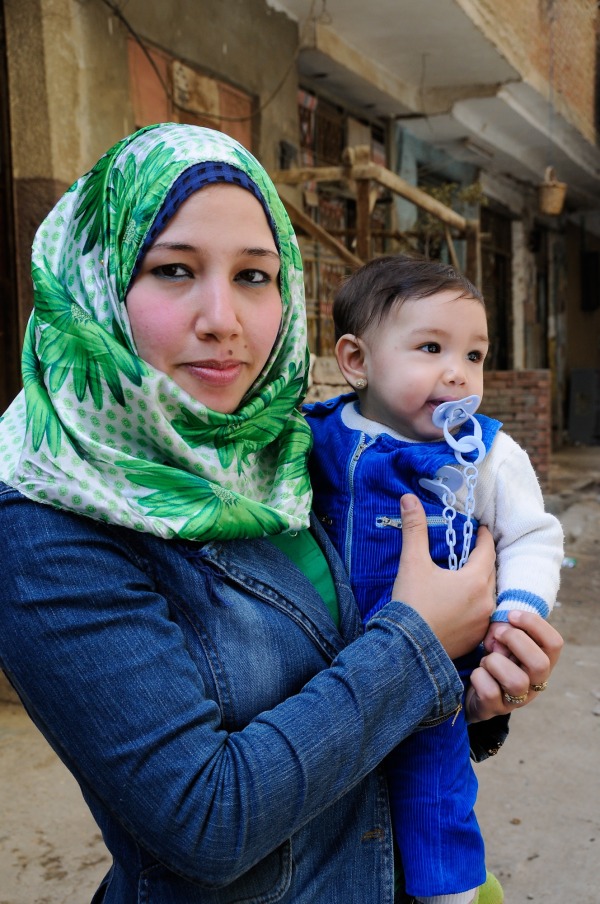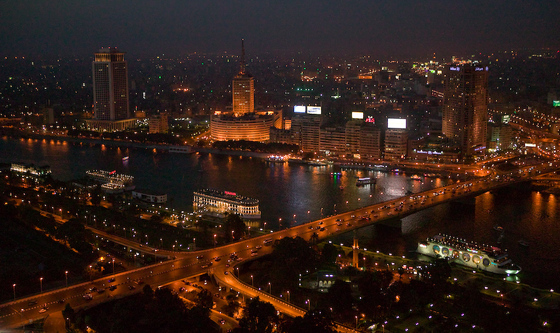www.cuipcairo.org is a new website that acts as a central repository of information on events, initiatives, organizations and more that have to do with Cairo's built environment. Bookmark them, there's an events calendar function that has recently been added and is very handy for tracking what's going on about town. More info available in this PDF.
From Cairobserver, a site about Cairo's urban heritage and one of the best new Egypt-based blogs of 2011:
Take the lift at Cairo Tower to the top and look at the skyline. Besides the TV&Radio building from the 1960s and the ministry of foreign affairs from the 1990s, a couple of bank towers, the rest are hotels, mostly built with Gulf investments during Mubarak’s tenure. What does that tell us about Egypt, about Cairo? There are no condo towers for the wealthy because they opted to go suburban, there are few or no office towers (besides the two Sawiris towers further north) because most businesses that aren’t multi-nationals are too small to rent space in an actual office tower so they rent cheap-rent residential apartments. Big telecommunication companies don’t need office towers in Cairo because they went to the desert and built their own “Smart Village.” And media companies also went to the desert and built “Media City.” The skyline isn’t telling of a very healthy economy. The kinds of investments that typically make a city work have all abandoned the city.
The result of decades of petrodollar and comprador capitalism...
The shape that Cairo is taking--physically and in people's imaginations--is something that has interested me for a long time. I've long been fascinated with the two extremes that seem to represent the future of the capital: the عشوائيات, the so called "informal" neighborhoods where as man as two-thirds of all Cairenes live; and the new private gated cities in the desert, whose recent, staggering spread is altering the dimensions and relations of the city.
 Hoda, 26, Imbaba resident. Photo by Dana Smillie.
Hoda, 26, Imbaba resident. Photo by Dana Smillie.
I've just published a piece in The Review at the National that includes a lot of my thoughts on the topic. Here's part of the introduction:
Most capitals are magnets, but the speed with which the Egyptian one has grown in the last century is testament both to a remarkable centripetal power and to a surrounding vacuum of opportunity. Swelled by waves of rural migration, the population of greater Cairo has gone from less than one million at the beginning of the 20th century to about 18 million today – a megacity on the order of Mumbai or São Paulo, with more people than Lebanon, Jordan and Libya combined.
For centuries, Cairo’s expansion has been checked by geography: the city is bounded by a narrow strip of fertile, Nile-irrigated land, with nothing but desert beyond. The migrants who flocked to the city in the last century found there was nowhere to live: they built shacks on rooftops; they made homes out of covered alleys, inner courtyards, and stairwells. Priced out the soaring formal real estate market, they started building illegally--on the precious agricultural land that surrounds the city, and on the barren plateau that separates it from the desert.
Cairo has long been on the verge of a nervous breakdown. The city teeters under the weight of its multitudes – its public services worn ragged; its air pollution some of the worst in the world; its traffic barely managed by freeway overpasses and tunnels, clumsy last-minute bypass surgeries intended to repair the city’s clogged and failing arteries.
Faced with the city’s barely contained chaos and alarmed by the growing slums, Cairo’s elites have begun to dream of escape. Along the Ring Road, billboards advertise exclusive new private developments, with names like country clubs or bad discos – Utopia, Le Reve, Dreamland, Qattamiya Heights, Palm Hills, Belle Ville – and slogans like “The Egypt of My Desires”. One advertisement, overlooking dilapidated buildings in the centre of town, simply asks: “Why Are You Here?”
The piece goes on to look at, among other things, the--generally negative and very stereotypical--ways in which Cairo's "slums" are portrayed and discussed.
I couldn't quote from all the books that informed the piece, but I thought I'd take this opportunity to list some recommended Reading on Cairo:
1. Cairo Cosmopolitan. Ed. Diane Singerman and Paul Amar (AUC Press, 2006), and Cairo Contested, Ed. Diane Singerman (AUC Press, 2009). Collections of scholarly articles, many of them insightful and informative.
2. Maria Golia's Cairo: City of Sand (AUC Press, 2004). Loving and idiosyncratic essays about the city, full of wonderful details.
3. Mike Davis' Planet of Slums (Verso, 2007). Puts the development of Cairo's informal neighborhoods into terrifying global context.
4. Dina Heshmat's scholarly work Cairo in Contemporary Egyptian Literature (available in Arabic and French only).
5. Le Caire by André Raymond; 1001 Years of the City Victorious, by Janet Abu-Lughoud; and the extremely readable Cairo, the City Victorious, by Max Rodenbeck. Great books for getting to know the city and its history.
 A list of links on Egypt's ridiculous war on swine. There is a very interesting aspect to this story, highlighted below in in the second-to-last link and in the Egyptian Chronicles post, that this is being grabbed by the government as an opportunity to clean up the urban pig farms around Cairo (used by the zabaleen), such as the one you smell on the 26th July corridor as you exit Mohandiseen. It is fair enough to want to clear these insalubrious areas, but with what compensation for those who will lose their livelihoods? And who will get the extremely valuable land?
A list of links on Egypt's ridiculous war on swine. There is a very interesting aspect to this story, highlighted below in in the second-to-last link and in the Egyptian Chronicles post, that this is being grabbed by the government as an opportunity to clean up the urban pig farms around Cairo (used by the zabaleen), such as the one you smell on the 26th July corridor as you exit Mohandiseen. It is fair enough to want to clear these insalubrious areas, but with what compensation for those who will lose their livelihoods? And who will get the extremely valuable land?- Reuters AlertNet - Egypt starts pig slaughter, some farmers resist
- Egypt: Pop singer tackles swine flu with song - Adnkronos Culture And Media
- Egyptian chronicles: Kill Them All
- Do I have Pig Flu? - Do I have Swine Flu?
- Culling Pigs in Flu Fight, Egypt Angers Herders and Dismays U.N. - NYTimes.com
- Brothers, Chickens And Pigs
- Egypt admits pig cull not anti-flu measure
- Egypt's call to kill pigs amid flu scare ridiculed


